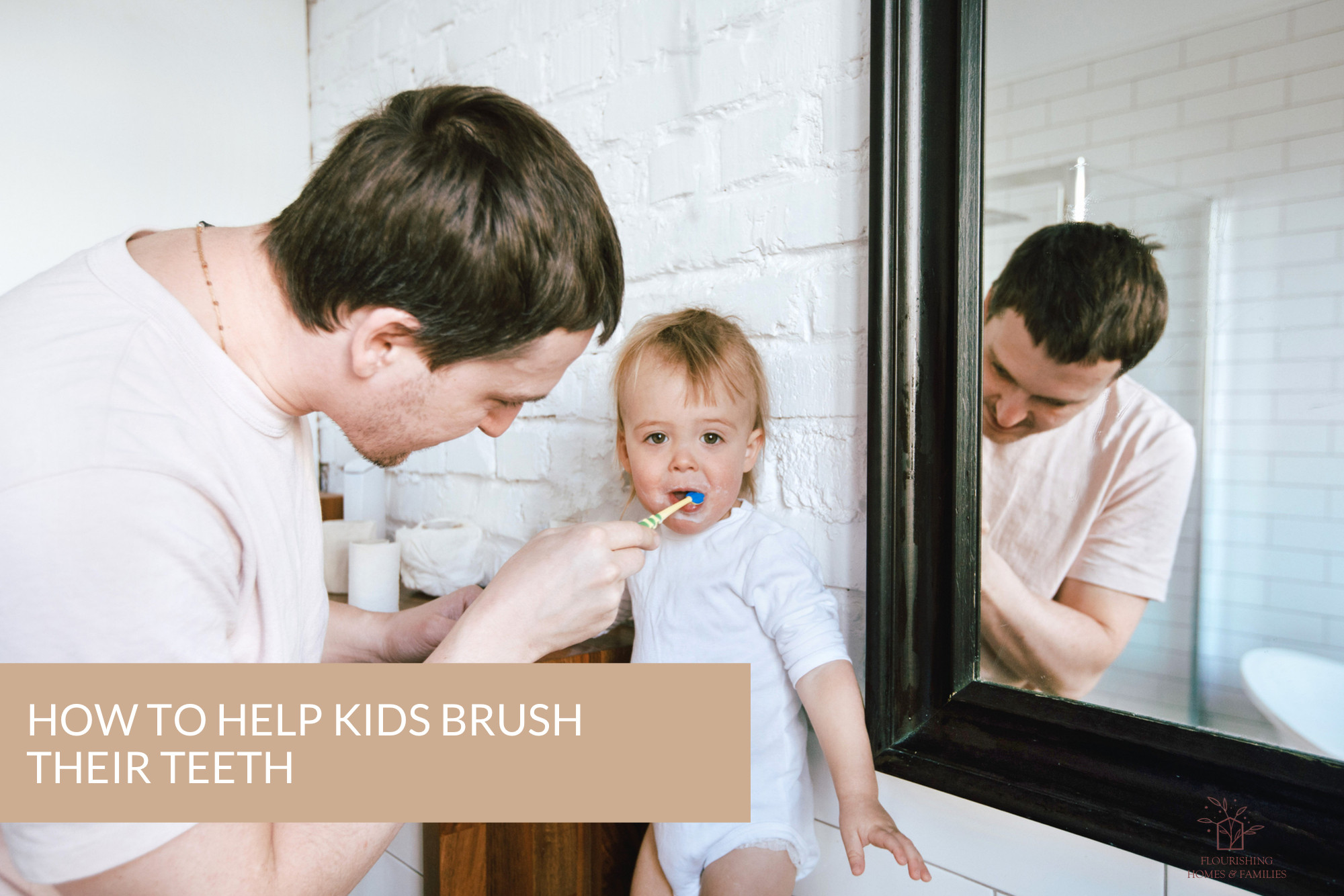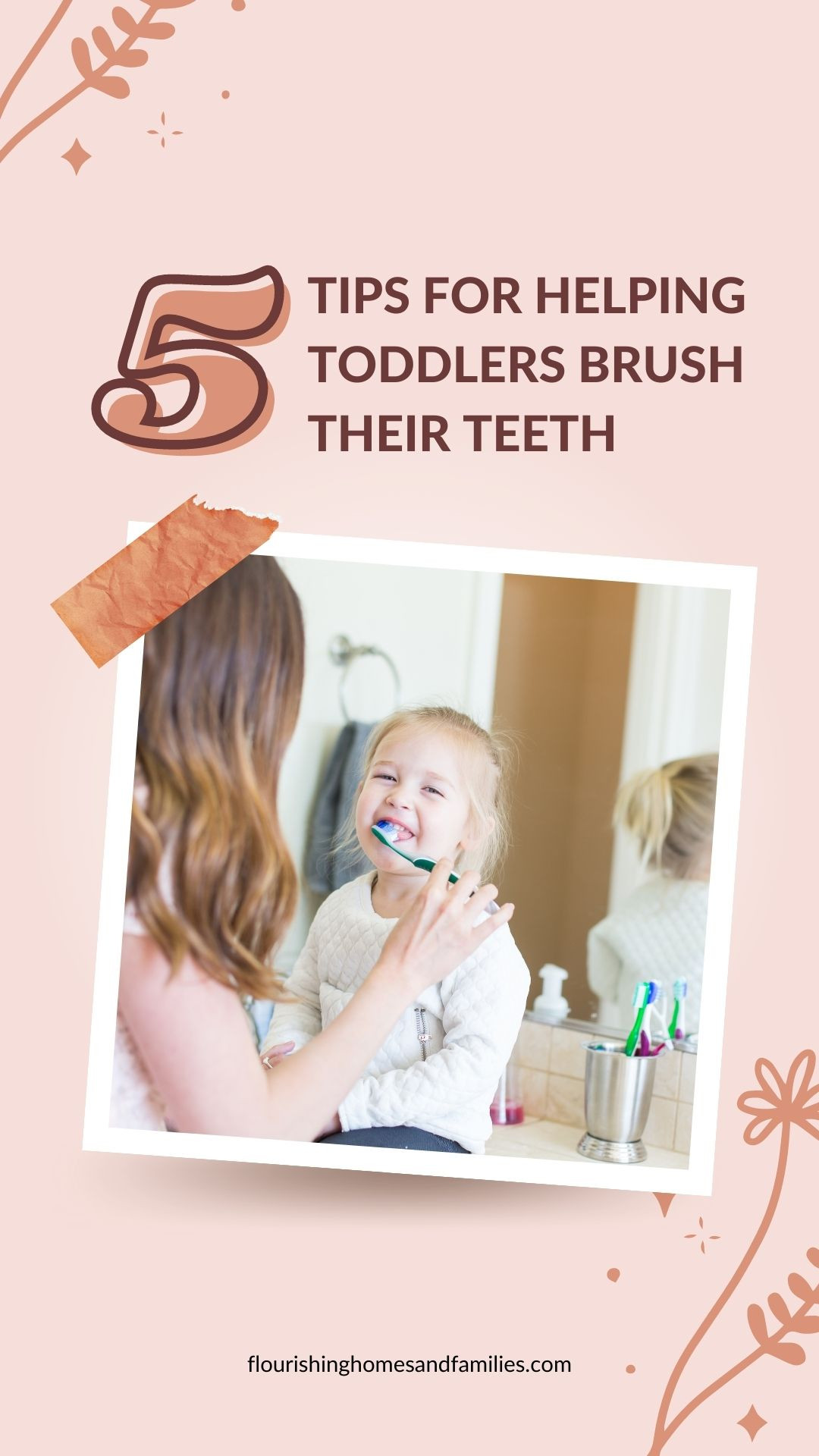
Encouraging toddlers to cooperate during toothbrushing can be a challenging task. However, it's important to prioritize their trust and avoid resorting to forceful measures that can harm both their dental health and your relationship. As parents, it's important to understand the reasons behind their reluctance and find creative ways to make toothbrushing a fun and enjoyable experience for them, while nurturing their trust in our leadership and guidance.
Understanding the Challenge:
It's not uncommon for young children to resist brushing their teeth. Not only do they not understand the importance of dental hygiene (no matter how many stories we tell or lectures we give), there can be other reasons why they protest teeth brushing:
- Sensory sensitivity: The sensation of toothbrush bristles and toothpaste foam can be overwhelming for some children, leading to discomfort or aversion.
- Autonomy and control: In toddlerhood, children are beginning to assert their independence, and toothbrushing may be seen as a task imposed on them, leading to resistance in toddlerhood (and beyond!)
- Boredom or lack of engagement: Brushing teeth can be seen as a mundane chore, lacking excitement or stimulation.
Peaceful + Playful Approaches to Helping Children Brush Their Teeth
- Make It a Game: Transform toothbrushing into a playful activity by turning it into a game. Use your imagination to create scenarios such as pretending to be a toothbrushing superhero or a silly dentist. Encourage your child to make animal sounds while brushing different parts of their mouth or play their favorite music during the process. These engaging activities help distract them from any discomfort and make the experience enjoyable.
- Lead by Example: Children often mimic their parent's behaviors. Allow your toddler to observe you brushing your teeth regularly, demonstrating the importance of oral hygiene. Make it a joint activity by brushing your teeth together, taking turns, or even letting them "help" brush your teeth. This creates a bonding experience and reinforces the habit in a positive manner. You can even play a tooth-brushing themed "Follow the leader" and let the copy your moves.
- Choose Kid-Friendly Toothbrushes and Toothpaste: Invest in toothbrushes designed specifically for toddlers, featuring vibrant colors, appealing characters, or favorite cartoon themes. Additionally, select a toothpaste with a pleasant taste, specifically formulated for young children. The enticing toothbrush and toothpaste options can make brushing time more exciting for your little one.
- Establish a Routine: Creating a consistent routine around toothbrushing helps children develop a sense of structure and expectation. Set aside specific times each day for brushing, such as after breakfast and before bedtime. Ensure that the routine remains consistent, even when traveling or during busy days. This familiarity will make toothbrushing feel like a natural and non-negotiable part of their daily life.
- Provide Choices and Autonomy: To foster a sense of control, offer your child choices within toothbrushing routines. Let them select their toothbrush or toothpaste flavor from pre-approved options. Additionally, allow them to choose whether they brush their top or bottom teeth first, before or after their bath, or in your bathroom or their bathroom. By empowering them to make decisions, you turn brushing into a task they feel they have some say in.
- Keep it short: Even adults find being poked and prodded in their mouths to be an overwhelming experience. While the ideal brush time may be two minutes, it is okay to build up to that over time. Gradually increase brushing time by incorporating enjoyable elements such as songs or timers. Singing while brushing or pretending to chase "green grimies" makes the process more engaging and establishes a time limit, ensuring your child knows when it will end. Visual times may be helpful for young children. Start small and gradually increase by 5-10 seconds each day.

- When you notice your toddler putting things in their mouth, swap it out for a toothbrush. This introduces the toothbrush in a neutral and no-pressure way and allows them to chew on and experiment with it.
- Bring a stuffed animal or doll and let them brush their toy's teeth before they brush their own.
- Swap turns - let them brush your teeth, then swap and you brush their teeth.
- Play a silly song or a Daniel Tiger Short while they brush their teeth.
- Make silly noises as if the germs are scared and running away from the toothbrush.
Helping toddlers develop good oral hygiene habits can be a challenging but essential task. By understanding why they may resist brushing their teeth and implementing playful and practical strategies, you can transform toothbrushing from a chore into an enjoyable routine. Remember, patience, consistency, and creativity are key in guiding your little one toward a lifetime of healthy smiles.
Share your tips and tricks in the comments!













In hindsight, I believe baby’s faces from the beginning should be wiped gently, I have heard that a baby’s nose is very tender also, gentle cleaning of a funky nose should also be practiced. I will give the child a washcloth to wipe their own face after a meal. They are more cooperative to allowing me to finish cleaning their face that way.